Exploring the surroundings of the Ohrid Lake – Macedonia
The eastern coast of the Ohrid Lake
I drove up to Elshani, and from there I came down to Peštani. Further on I went to the museum on water from Gradište. I had lunch at a restaurant on the beach of Trpejca, overlooking the Ohrid Lake. Then I went to the St. Naum Monastery and returned to Peštani.
Elena, the owner of Villa Ella exaggerated with the money, so I left the place as soon as possible. Further, I headed toward the eastern coast of the Ohrid Lake, toward the border with Albania. Lake Ohrid was among the deepest (300m deep) and oldest (3 million years old) lakes of tectonic origin in Europe. It had no less than 200 endemic species of flora and fauna. The Galičica mountains bordered the eastern shores of the lake. Therefore, the neighboring mountains constrained villages to develop either up in the mountains (on steep slopes), either right on the shore of the lake (on narrow pebbled beaches).
I drove up in the Galičica mountains, to the village of Elshani. There were many elegant villas, and a local man placidly cut the hedge that bordered his garden. Suddenly, a car stopped behind me and a gentleman approached me in Romanian (after he had seen my car with Romanian numbers parked nearby). Next, the gentleman invited me to have a coffee at Risto’s guesthouse, where he told me his story.
Alpaslan was Turk but he lived in Constanța (a Romanian town). He had just been with business in Tirana and come to visit his friends – Risto and Anita, whom he had found on booking site a few years back. He was going back to Tirana, from where he was going to fly to Istanbul, then return to Romania. After living for eight years in Romania, he had to pass an exam in order to get his Romanian citizenship. He could sing the Romanian national anthem and spoke Romanian very well.
I came down from Elshani village and stopped in Peštani, a so-called fishing village. Peštani looked more as a resort with holiday houses but it had fishermen boats docked ashore. From Peštani I continued toward the museum on water from the Bay of Bones, Gradište. The museum was the reconstruction of a lake-settlement dating back to the period between 1200-600 B.C.
The dwellings were rebuilt of earth and straws and had rectangular or circular forms. All of them grouped around a large open space (similar to the modern public squares). Most of the reconstructed dwellings had an earth oven built directly on the floor and a separate place for sleeping – furbished with furs and mats. In some houses, there was a loom with a straw weaving in the main room. But no matter what, each dwelling had a floor trap through which the inhabitants fished directly from the waters of the lake. The shutters of the windows or doors were made of straw rolls, with rope weaved at their edges. Uphill, a Roman fortress had been rebuilt, overlooking the lake.
I followed the Ohrid eastern shore and continued to drive toward Trpejca, the last real fishermen village from the area. The houses from Trpejca crammed on the steep slope of the mountain that ended right in a narrow pebbled beach. After I parked my car on the main road, I walked down a line of steps toward the center of the village, which actually was a group of villas, restaurants, and terraces with lake and beach view. Eventually, I had lunch at the Ribar Restaurant, from where I could watch the pristine azure waters of the lake. When I turned back to my car, a local man strove to rent me his flat with beach view, but he didn’t think of dropping the price. He offered me a freshly-cut rose from his garden, though.
From Trpejca I headed to the border with Albania, to the famous monastery of Sveti Naum. There tourist ships coming from Ohrid town docked in the small port of the monastery. The 16th-century monastery was a real tourist industry, with several restaurants, its own hotel, and dozens of souvenir shops. The Byzantine church with apparent brick sat in the middle of a large courtyard full of blue peacocks. It had a beautiful panorama of the small harbor, but it lacked the atmosphere of a monastic lifestyle, which probably took place only in the private spaces and not during the visiting hours. I turned down the unreasonable expensive boatmen and chose to walk to the springs of the Crn Drim River on my own. The springs appeared from the ground close to two chapels and flowed into the Ohrid Lake just in front of the monastery.
After I left the monastery of St. Naum, I tried to stay at the Ljubanista campground overnight. The camping was not officially open and the guard didn’t allow me to pitch my tent on their beach. I quickly booked a super-room with balcony overlooking the mountains at Villa Lile and returned to Peštani. There, Boris – a Macedonian with blue eyes, welcomed me with a smile and offered me a milk-coffee while I was playing with their little kitten which fell asleep in my arms.
A round-trip over the Galičica mountains, overlooking the Ohrid Lake
From Peštani I went to Trpejca, drove up in the mountains and then went down on the other side of the mountain ridge, toward the Prespa Lake. I returned to the town of Resen, went close to Ohrid, and stopped in Struga. In the evening I pitched my tent in Camping Livadiste, near Radožda.
In the morning, I had breakfast on the sunny terrace of my room from Peštani, overlooking the mountains. It was cold though and I didn’t want to leave the cozy room I had there. However, I had to go, and somewhere near Trpejca I turned left and began to drive toward the mountains. The road gently went up at the beginning, but after a while it started to go up steeply. Moreover, a terrible wind blew when I got out of the car and it felt extremely cold. I quickly stopped at Koritski Rid, a lookout overlooking the plain of Trpejca, then I climbed up the tight bends of the road and reached Galičica Pass.
From Galičica Pass I should have hiked on top of the mountain in order to see both lakes (Ohrid and Prespa) at the same time. The wind blew continuously, though, so I gave up the idea. The road that went down to the Prespa Lake was potholed most of its length, but I continued strait ahead. Soon I stopped in the village of Stenje, which seemed abandoned. On my way back to Ohrid, I chose the road that went through the town of Resen and then through the mountains.
I followed the road through the mountains toward Ohrid and passed close to the town. After that I stopped for a break in Struga, the other town situated on the shores of the Ohrid Lake. The water canal of the Black Drim River had colorful boats, lush reed, a large beach, and clear waters. Restaurants and terraces, malls and shopping area grouped all together on the quay that crossed throughout town center. From Struga, I continued along the western shore of the Ohrid Lake and stopped near the border with Albania, at camping Livadiste. The campground seemed shabby, but I pitched my tent near the beach, overlooking the azure lake.
Through the villages along the Ohrid Lake
I went to the cave-churches from the villages of Radožda and Kališta. Then I had fried fish for lunch at a floating cozy restaurant. I spent the evening at the camping-restaurant with Vasko and Darko.
In the morning, all the members of the camping-staff offered me coffee, juice, or beer. I cooked omelet on my little gas-stove and sipped a coffee on the sun-loungers from the beach, overlooking the lake.
I went to the village of Radožda, where the restaurants with terraces floating on water caught my attention right away. From the lake, I steeply hiked to the cave-church and climbed a wooden staircase to get on the platform where the tiny chapel stood. It had two small rooms, one of them suspended above a cliff, where the monk might have extended his inner space. Moreover, the interior frescoes of the chapel continued outside the rock wall. Back to the village, I walked among the massive houses that didn’t seem to have the feeling of privacy, but rather portliness and functionality.
I drove along the lake shore to the monastery from Kališta village, but the cave-church had a lock on the door. The monastery seemed a bit dilapidated and deserted, but a religious music gently played in a megaphone from the courtyard. I returned to the village of Radožda, where I ordered fried local fish (belvica) at one of the floating restaurants. I had time to swim in the lake, sunbath, and even burn a bit until the food was ready.
In the afternoon, when I came back to Camping Livadiste, Darko insisted on offering me a juice at the beach-bar. Darko was an accountant from Radožda village, who often came to the camping. He drank a beer and smoked a cigarette, then he took his motorbike and left without saying a word. In the evening, I went to the camping restaurant, where Vasko (the chef) offered me huge pancakes with bananas and chocolate on the house.
Vasko told me that he lived in the village of Drastevitza and drove 20 km to the camping each day. He had worked in Australia for four years and earned good money (especially during the night shifts). His sisters lived there too, but he had to turn back and take care of his mother. He spoke bad English, though, and it was hard to always guess what he said. However, for me he represented the portrait of the authentic Macedonian – always hospitable and good-willed.
The following day, I decided to leave the camping from the Ohrid lake. Early in the morning, Darko came with his motorbike at the beach-bar (at 7 a.m.!), and the children from a training camp were already running along the beach. I headed to the border with Albania, where I was about to start a new adventure.
Exploring the surroundings of the Ohrid Lake is the last diary about the days I spent traveling around the Ohrid Lake (you can find the version in Romanian at In jurul lacului Ohrid, Macedonia – II). The previous post about Ohrid town can be found at Exploring the Macedonian old town of Ohrid. And here are all my Travel Diaries from Macedonia, the Balkan Countries (x6).
Have you been to Ohrid Lake or plan to go there? Leave a comment below this post and tell me what you liked about Ohrid or what you’re interested to see there.
Want to subscribe to my travel diaries? Just leave your email in the subscription form below and you’ll be notified when I publish a new travel diary.
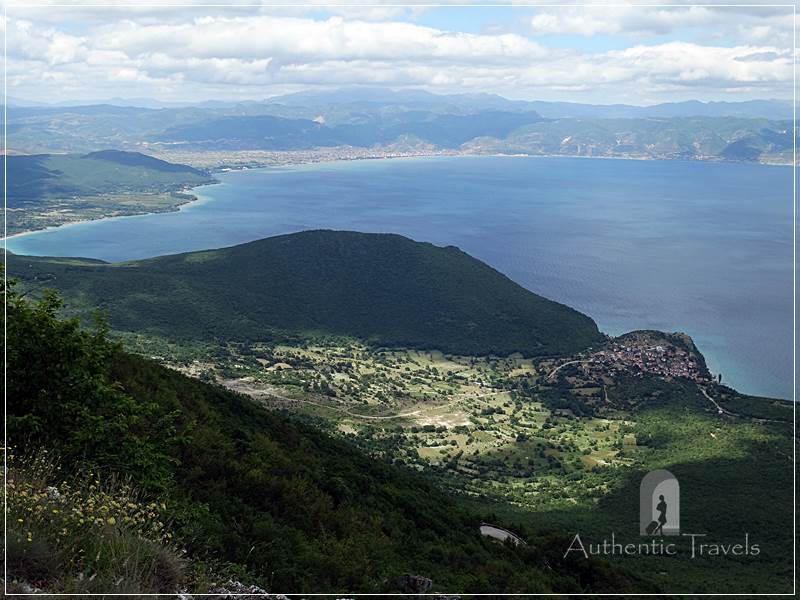
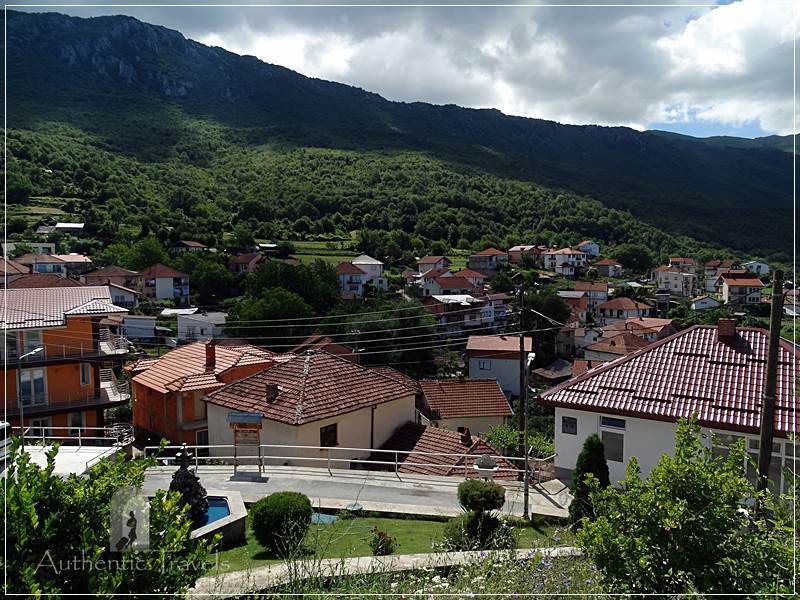
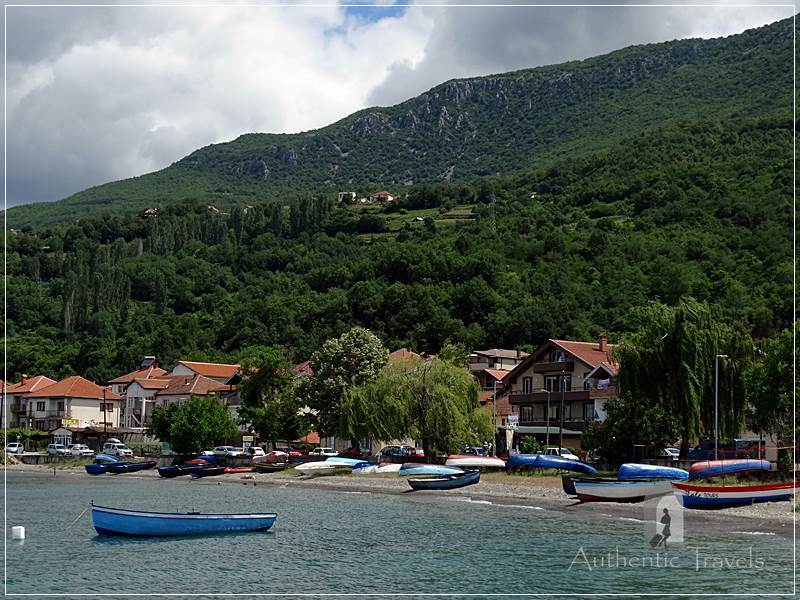
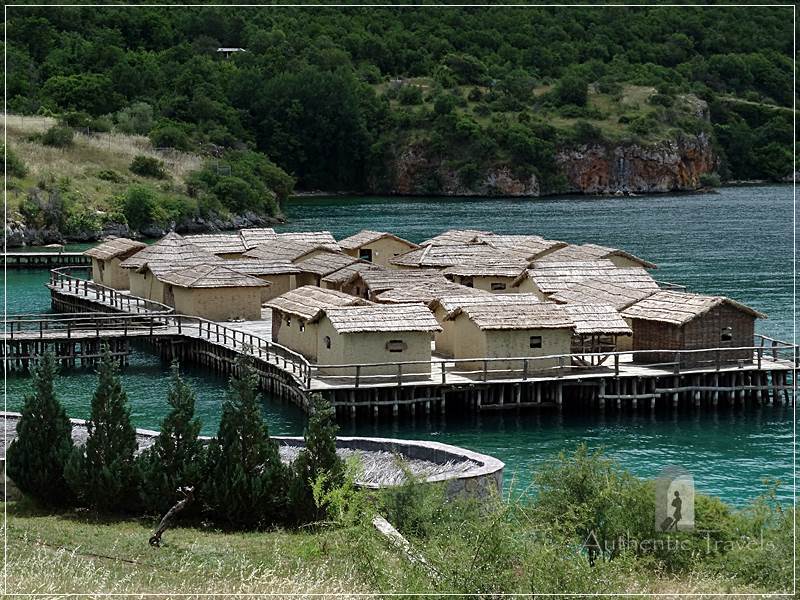
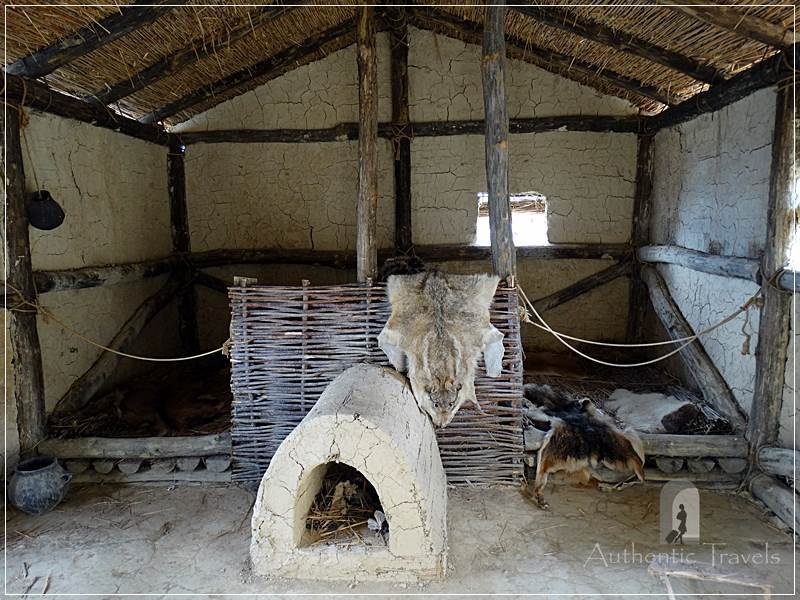
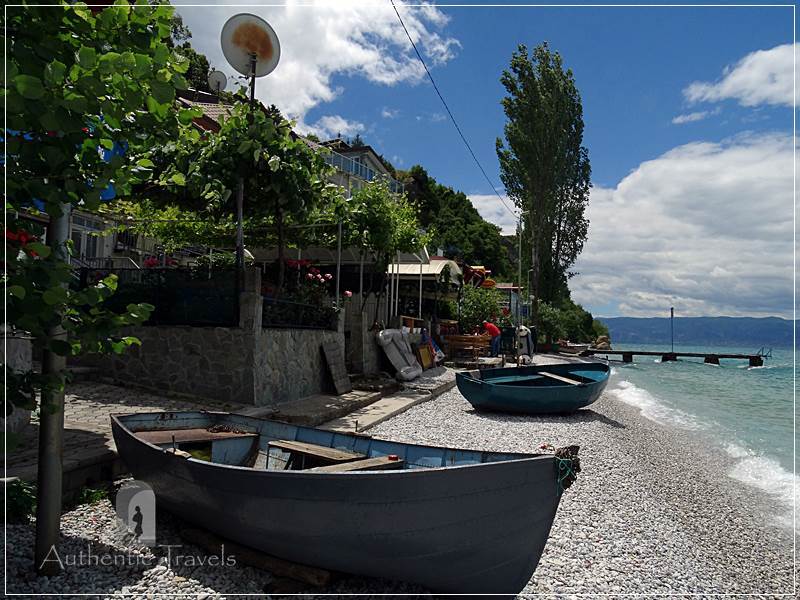
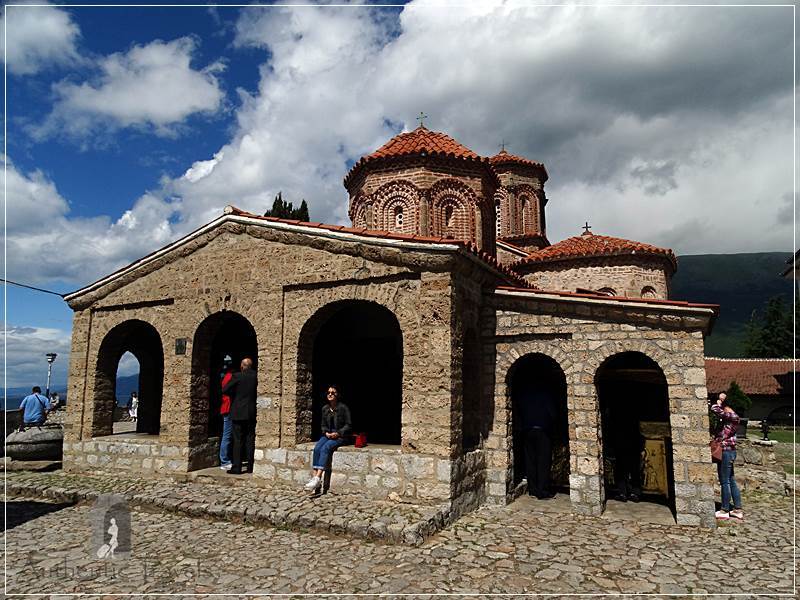
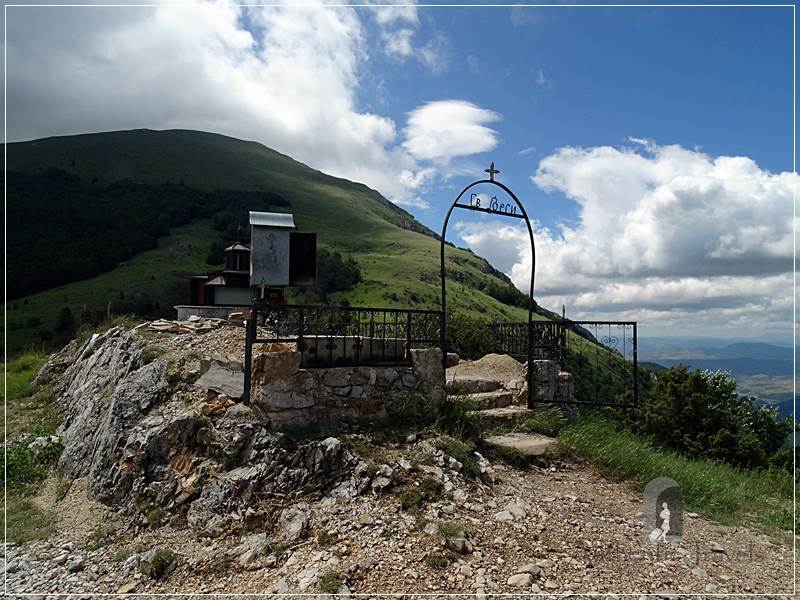
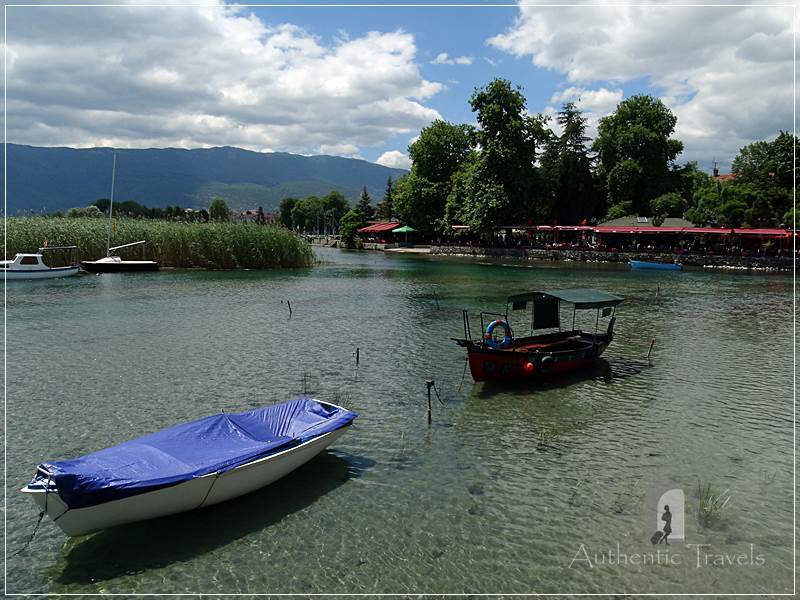
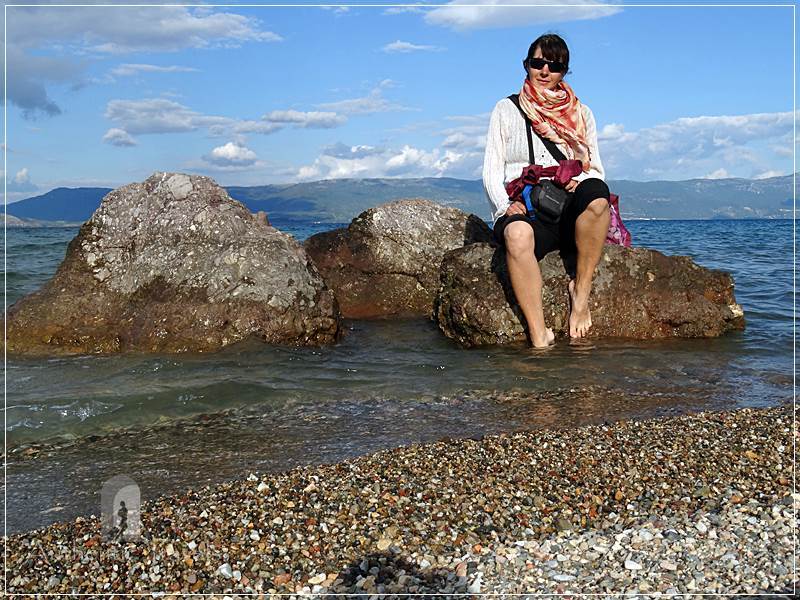

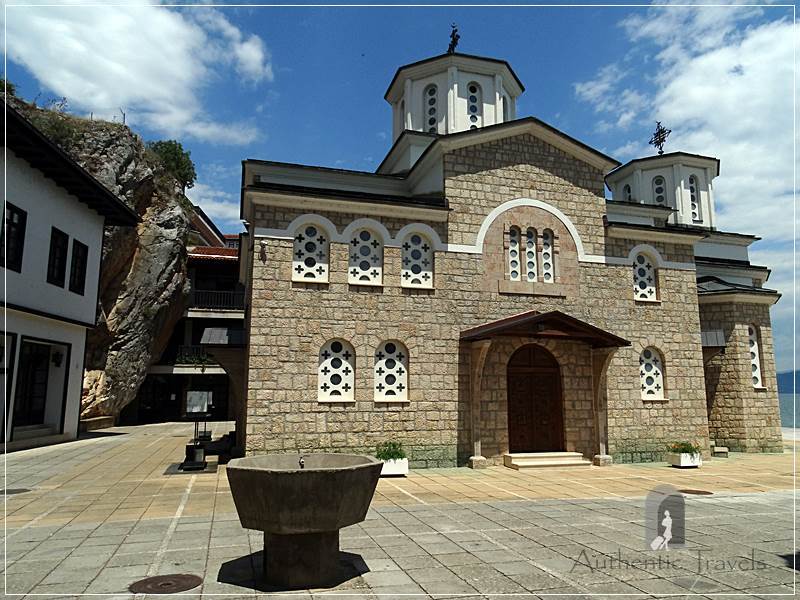
I’ve not heard of Ohrid Lake, but after reading your post I would love to explore Macedonia. The views of the lake are beautiful and very serene. We love to go camping and always on the look out for new places. Are there many camp sites there? Must have been great to wake up and enjoy your breakfast with views overlooking the lake.
Yes, there are many camping near the lake but the funny part is that the accommodation is even cheaper than pitching your tent. So I chose to rent a room instead of pitching my tent, although it would have been great to stay by the lake.
Lake Ohrid looks beautiful. Have yet to make it to Macedonia but would love to visit soon after reading your post.
I have enjoyed your travels around Macedonia. I am sure it was great to get out of the cities and into the country. The area around Ohrid Lake looks lovely. Too bad you didn’t get to hike to see both Ohrid and Prespa Lakes. The small country villages are much different from the city crowds that you experienced. So interesting that some of the houses had floor traps for fishing. Loved seeing this very different view of Madedonia.
I liked Macedonia very much, especially the hospitality. Itțs something I have never experienced before but I am sure there are many other nations like that.
Ohrid Lake looks amazing! I’m drawn to places like this. The Monastery, the cave church, they’re the best reason to travel. I love all the history and culture these places have to offer!
Ohrid region is known as the place of 365 churches – one for each day of the year.
Great post!! Macedonia is certainly one of the least visited countries in Europe let alone the Balkan area. Ohrid is definitely the most famous place in Macedonia. Very informative post.
Thank you Daniel for your kind words.
I have never heard of Ohrid Lake. The area looks fascinating. I love the cave church, I’ve never seen anything like that before. Sounds like a wonderful experience. I would love to visit someday!
The cave churches are very intriguing. It’s amazing how those people managed to find such a remote location.
I love the history that you capture of not just the place but the people around. Like how the guy got to be a Romanian. It makes the whole journey so interesting. Quite intrigued by the cave churches. Have never been to one but would not definitely want to get there. Sveti Naum Monastery seems another place that is full of tales. Thanks for adding a whole lot of new things to my dream list.
I think that in these times of crisis it is important to keep dreaming.
Macedonia I first came to know from a blogger friend’s post first and realized it is really a beautiful place and less frequented by travelers amongst European countries. Ohrid lake looks so calming. I would love to do some fishing for sure.
There are some endemic fish there, plashicka, I think you’d like it.
Wow! This is something unique. I have never seen dwellings made of earth and straws. It’s fascinating to see one up close. Thank you for sharing your wonderful experience at Ohrid Lake. It certainly has its own charm. This actually my first time to hear about this place and I am glad to learn something new.
Those dwellings were reconstructed as part of a museum. And yes, Ohrid Lake is stunning.
What makes the place more exciting is that you will know that you are safe and you can mingle with the locals when you get to a place.I think this makes it more beautiful specially when camping. I should have these beautiful experiences one day when I get there.
I am pretty sure you will have only great experiences in Macedonia.
You have explored a very unique place and that too very beautiful. Though heard about Mecadonia a lot but never knew this Ohrid Lake and I am amazed to see its beauty. Even these Galičica mountains are new to me and also this village of Elshani. The whole village, lake and landscape looks spellbound. Thanks for sharing an amazing place with all great information.
I also loved a lot the surroundings of Ohrid Lake. They are simply so spectacular.
Dear Iuliana,
I came across your website about Ohrid and I’m vary happy that you have visited my hometown :). However if you need further info and or someone plan to visit Ohrid, just contact me or add me on my FB or Instagram profile: Gjoko Zoroski. I’m working as nature tour guide and running environmental projects in the UNESCO Ohrid region.
Dear Gjoko, I am so happy you found my travel blog. I loved Macedonia and people were so hospitable there (see my post about Stevce in Kratovo). If you ever come to Romania, let me know.